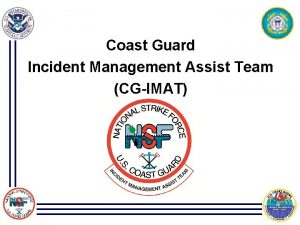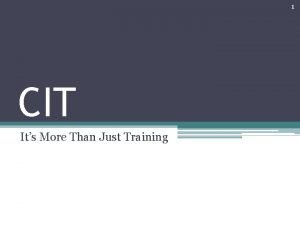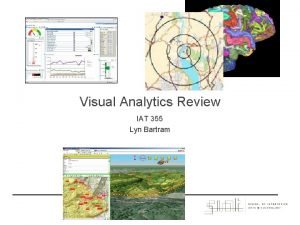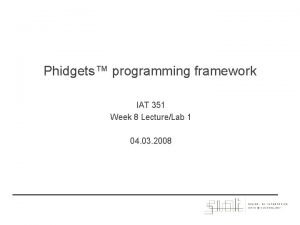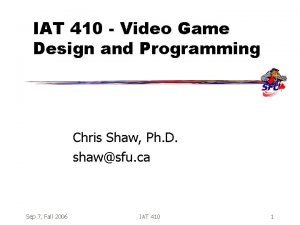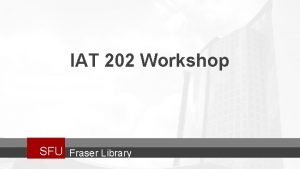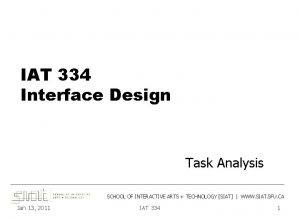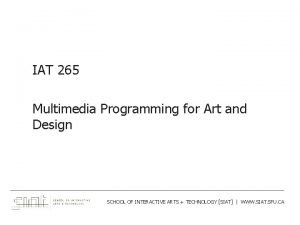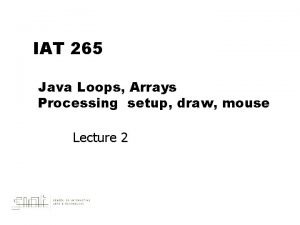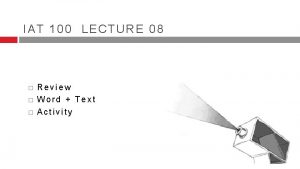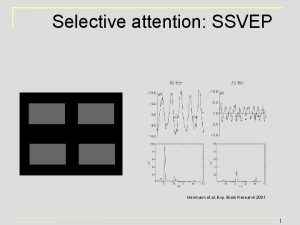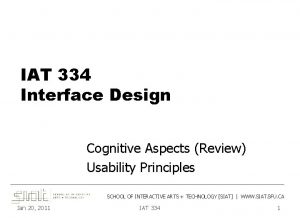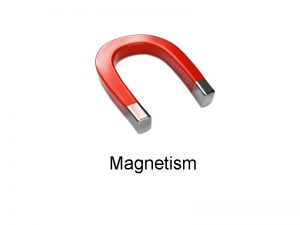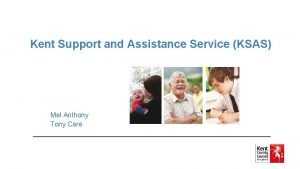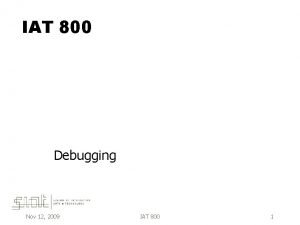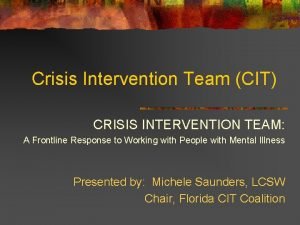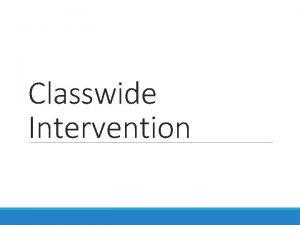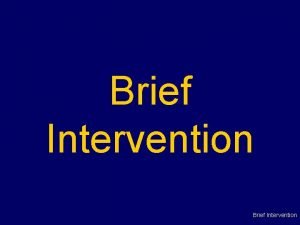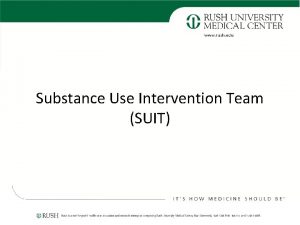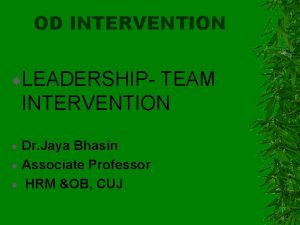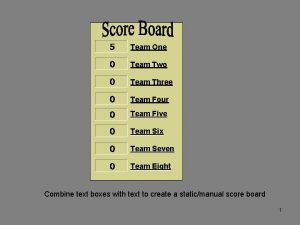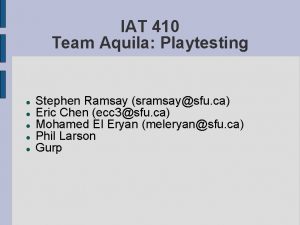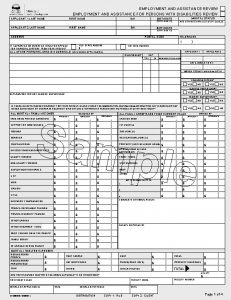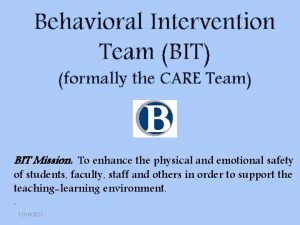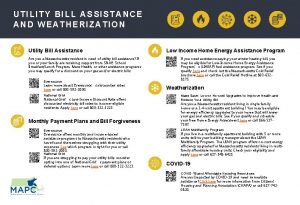The Intervention Assistance Team IAT and Rt I










































- Slides: 42

The Intervention Assistance Team (IAT) and Rt. I: Building a Healthy System for Student Success Interventions Office Dr. Natalie Blasingame Dr. Jennifer D. Montgomery Dr. Albert Du. Pont Ms. Leslie Smith, Travis ES Ms. Mary Oliver, Travis ES Ms. La. Dale Lamb, Johnston MS Ms. Danyetta Godwin, Johnston MS June 14, 2016 Date: 00/00/2014 Presenter: First and last name Title

Looking at your data: Who are you concerned about? • Which students are your top concerns? How do you know, or how will you find out? (Find Your 20) • What was done systematically for them this year? Did you get the results you expected or hoped for? 2

SESSIONS GOALS • Understand the pillars of an effective Intervention Assistance Team (IAT) and how it facilitates the Response to Intervention (Rt. I) process • Learn about best practices and local examples of IAT/Rt. I in action • Evaluate your current practice and develop goals for improvement • Develop an action plan to begin implementing and monitoring systematic interventions and wrap-around services for struggling students • Conversation about your next leadership move… 3

Big Picture: What is Rt. I/MTSS/IAT • Academic and Behavioral interventions: reciprocal relationship • Every Student Succeeds Act (ESSA), Dec. 2015: – School-wide tiered system of supports – Targeted assistance to students without reference to LD ID – Coordinates multiple services to prevent and address problem behaviors and academic supports such as literacy services, ELL services, etc 4

VIDEO • As you watch the video, think about what works and what doesn’t work for this campus team. 5

Rate the VIDEO TEAM • Create a T-chart: What worked? What didn’t work? Worked Didn’t work 6

Johnson MS- Secondary Travis ES- Elementary CAMPUS BEST-PRACTICES 7

Presenters: Leslie Smith, M. Ed. , NCC, LPC IAT Coordinator Mary Oliver Special Education Department Chair TRAVIS ELEMENTARY

Steps to the IAT Process • Tier 1 • • • Tier 2 • • Universal Screener Monitor progress for Tier 1 interventions Discuss in PLC Document interventions in Chancery Implement Tier 2 interventions and monitor progress Discuss in Grade Level Support Meeting Document in Chancery Tier 3 • • IAT Meeting Teacher Specialist or Interventionist will start Tier 3 interventions and monitor progress Document in Chancery If interventions are not successful, the IAT Team will discuss if a Special Education evaluation is appropriate

IAT Meeting • The IAT committee will meet to discuss the status of the child and work together to find ways to promote the student’s success. The committee focuses on high-level classroom instruction that is appropriate to meet the changing needs of individual students. • The Committee: IAT Coordinator, Administrators, Teacher(s), Reading and/or Math Specialist, and Parents / Guardians • Teachers are asked to bring any data they have for the student and have documentation in Chancery. • Agenda – 5 minutes: Identify concerns – 5 minutes: Discuss previous interventions and outcomes – 10 minutes: Discuss next steps (new intervention plan, moving to SPED testing)

Interventions • Interventions need to be appropriate and meet the needs of the students. • Interventions need to meet the criteria for each Tier. • Interventions should increase in intensity, frequency, and duration.

Data and Progress Monitoring Remember our RTI goal is to close gaps in student learning, modify our interventions in response to student progress, and show that those gaps have been closed. • If progress is not happening, we will have the information needed show that a referral to diagnose a disability is warranted.

Data and Progress Monitoring • Progress monitoring tools should measure the intervention. – Consider writing a measurable goal to focus the instruction and data keeping. • Why? Goals focus both instruction and data to be collected. • Vague Examples: – The student will improve her reading. – The student will correctly solve math problems.

Data and Progress Monitoring Specific Goal Examples: • After 6 weeks of practice analyzing the clues in the word problem, the student will explain why they chose the correct operation to solve the problem in 4 of 5 opportunities. • After 6 weeks, the student will begin 3 of 4 assignments within 2 minutes of the instruction being given. • After 9 weeks, the student will be reading at a DRA level 12.

Data and Progress Monitoring Specific Goal Examples (cont. ): • After 6 weeks when reading independent level texts, the student will find evidence in the text to support main idea and details with 80% accuracy. – After 9 weeks the student will solve two digit subtraction with regrouping with 75% accuracy. – After 6 weeks the student will read 40 of 50 1 st grade high frequency words in the context of a sentence. • 15

Data and Progress Monitoring • Progress monitoring for interventions – Done every 2 to 3 weeks – Why? This gives us one important piece of data to determine if interventions are working, if we need to modify the intervention, or if a referral is appropriate

Data and Progress Monitoring • Data Sheets – How we track all students – Why? We are trying to make it as simple as possible for teachers to collect the data that tells us if the student has made progress. – Collect data while working with the student either by making notes on a post it note and including the notes in the folder to be entered later or by writing directly on the data sheet. • Include: – Goal – Type of intervention (Content not just setting)

Data and Progress Monitoring • Data Sheets (cont. ): – Collect data while working with the student either by making notes on a post it note and including the notes in the folder to be entered later or by writing directly on the data sheet. • Include: – Goal – Type of intervention (Content not just setting) – Dates of instruction – Results of daily informal formative assessments – Results of weekly or bi monthly formal but short assessments. 18

Data and Progress Monitoring The end result of this process is that we have easily available, accurate data to direct interventions and include on Chancery reporting. This data will be clear to future teachers and useful to a diagnostician.

Chancery • Training for teachers at the beginning of the year and assistance throughout the school year with documenting interventions. • 3 Questions 1. What is the concern? 2. What specific interventions are you doing to address the concern? 3. What was the outcome of the interventions? (Progress Monitoring)

La Dale Webster Danyetta Godwin JOHNSTON MIDDLE SCHOOL 21

Pillars of IAT/Rubric • School-wide Data Review/ Universal Screening • Progress Monitoring • Problem Solving • Scripted Interventions • Referrals 22

Dr. Albert P. Du. Pont RTI INFRASTRUCTURE 23

Questions • What are the big themes from this presentation? • How might these structures look in my school? • What are some best practices that my school staff should work toward in our journey?

Pain Points • Too many students to handle as a school-wide team at once • Comments like “Let the reading specialist take him and fix him. ” or “She’s not my kid so it’s not my problem. ” • Students were not being caught at the exact moment they failed • Specialists (e. g. , special education teacher, administrator, counselor, parent) were being blind sided when students were failing and no one knew • There were no systems and no interventions for students

RTI Infrastructure Grade Level Teams • Support team members to plan Tier 1 curriculu m • Monitor all students weekly • Develop and documen t classroo m interventi on plans and Multidiscipl inary Team (IAT) • Create and monitor Tiers 2 and 3 interventi on plans • Meet weekly to discuss students receiving Tiers 2 and 3 services • Monitor all grade level plans • Compris ed of all specialist RTI Implement ation Team • Oversee all compone nts of impleme ntation • Monitor universal screener s • Create services master schedule • Evaluate impleme ntation • Develop services model • Compris ed of Special Education Team • Provide support to all teams to ensure effective strategie s are being impleme nted as early as possible • Monitor IDEA complian ce • Provide direct guidance Tier 3 services to ensure School Improvem ent Team • Oversee all aspects of school improve ment plan • Monitor schoolwi de data • Make recomme ndations to RTI Advisory Team based on data • Compris

Intervention Problem-Solving Infrastructure Teacher Level Grade Level IAT Level SPED Level* *Special education identification is NOT the end goal of the RTI process. However, it must be taken into consideration when working through the intervention process.

Teacher Level Process Based on data, student begins to fall behind. Teacher communicates with parents. Teacher tries out a lowlevel intervention. Teacher monitors student. Teacher adjusts intervention plan, as needed. SUCCESS! Keep monitoring. NO SUCCESS? Repeat process and begin to consult with others.

Grade Level Process After several documented interventions, teacher and RTI coach present case to grade level team. Grade level can either make new recommendations for the teacher OR take the case. Grade level team including specialists and parent develops an intervention plan. Grade level team meets regularly to discuss progress. Grade level team adjusts intervention plan, as needed. SUCCESS! Keep monitoring. NO SUCCESS? Repeat process and begin to consult with others.

IAT Level Process After several documented interventions, teacher and RTI coach as grade level representatives present case to multidisciplinary team (IAT). IAT meets weekly to discuss progress. IAT can either make new recommendations for the team OR take the case. IAT including specialists and parent develops an intervention plan. IAT adjusts intervention plan, as needed, including moving from tier 2 to tier 3 services. SUCCESS! Keep monitoring. NO SUCCESS? Repeat process and begin to consult with SPED team.

SPED Level Process IAT team collects all data and organizes data to show interventions provided to students and progress. SPED team conducts evaluation in accordance with federal and state law. IAT refers case to SPED team. *Special education identification is NOT the end goal of the RTI process. However, it must be taken into consideration when working through the intervention process.

Questions • What are the big themes from this presentation? • How might these structures look in my school? • What are some best practices that my school staff should work toward in our journey?

District tools • • • IAT Timeline Decision-making chart Rt. I Pyramid Roles and Responsibilities Rubrics Action Plan/School Improvement Plan http: //www. livebinders. com/play? id=200433 3 http: //www. houstonisd. org/Domain/39247 33




Action planning/SIP • What are your next steps? • Teams: Campus or like-level • Part of School Improvement Plan 37

SHARING OF ACTION PLANS (NEXT STEPS) 38

Next steps • What support do you need? – Professional development – Individualized campus support – Questions answered 39

Contact and Support Information Dr. Natalie Blasingame, Asst. Superintendent Interventions Office nblasing@houstonisd. org Dr. Jennifer D. Montgomery, Rt. I Manager Interventions Office jmontg 10@houstonisd. org http: //www. houstonisd. org/Domain/39247 40

Contact Information Dr. Albert P. Du. Pont 301 -613 -7568 albert@ileadershipsolutions. com

THANK YOU Date: 00/00/2014 Presenter: First and last name Title
 Chancery hisd
Chancery hisd Coast guard imat
Coast guard imat Community intervention team
Community intervention team Bucks county crisis intervention team
Bucks county crisis intervention team Team spirit becomes team infatuation
Team spirit becomes team infatuation Team spirit becomes team infatuation
Team spirit becomes team infatuation The white team cheers for the blue team, just like
The white team cheers for the blue team, just like Iat
Iat Iat
Iat Gmayag
Gmayag Sfu surrey library
Sfu surrey library Iat 100
Iat 100 Iat 355
Iat 355 Iat 355
Iat 355 Iat 334
Iat 334 Iat 265
Iat 265 102 graphic
102 graphic Spacing in graphic design
Spacing in graphic design 102 graphic
102 graphic Iat 334
Iat 334 Iat 265
Iat 265 Iat 265
Iat 265 Processing pimage
Processing pimage Iat 106
Iat 106 Iat 355
Iat 355 Iat 100
Iat 100 Iat-maglev
Iat-maglev Iat
Iat Iat
Iat Iat
Iat Iat 355
Iat 355 Iat 334
Iat 334 Iat 106
Iat 106 Iat-maglev
Iat-maglev Iat 265
Iat 265 Iat 106
Iat 106 Graphic design
Graphic design Iat 102
Iat 102 Ksas apply online
Ksas apply online Export marketing and investment assistance
Export marketing and investment assistance Hình ảnh bộ gõ cơ thể búng tay
Hình ảnh bộ gõ cơ thể búng tay Bổ thể
Bổ thể

